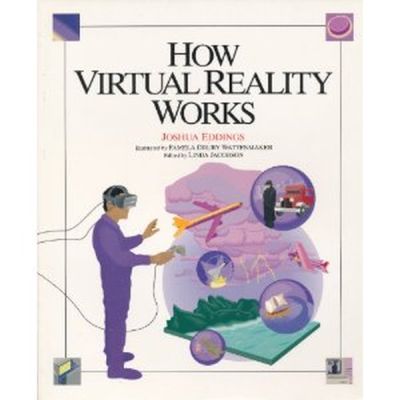Virtual Reality Immersion
In a virtual reality environment, a user experiences immersion, or the feeling of being inside and a part of that world. He is also able to interact with his environment in meaningful ways. The combination of a sense of immersion and interactivity is called telepresence. Computer scientist Jonathan Steuer defined it as “the extent to which one feels present in the mediated environment, rather than in the immediate physical environment.” In other words, an effective VR experience causes you to become unaware of your real surroundings and focus on your existence inside the virtual environment.
Jonathan Steuer proposed two main components of immersion: depth of information and breadth of information. Depth of information refers to the amount and quality of data in the signals a user receives when interacting in a virtual environment. For the user, this could refer to a display’s resolution, the complexity of the environment’s graphics, the sophistication of the system’s audio output, et cetera. Steuer defines breadth of information as the “number of sensory dimensions simultaneously presented.” A virtual environment experience has a wide breadth of information if it stimulates all your senses. Most virtual environment experiences prioritize visual and audio components over other sensory-stimulating factors, but a growing number of scientists and engineers are looking into ways to incorporate a users’ sense of touch. Systems that give a user force feedback and touch interaction are called haptic systems.
For immersion to be effective, a user must be able to explore what appears to be a life-sized virtual environment and be able to change perspectives seamlessly. If the virtual environment consists of a single pedestal in the middle of a room, a user should be able to view the pedestal from any angle and the point of view should shift according to where the user is looking. Dr. Frederick Brooks, a pioneer in VR technology and theory, says that displays must project a frame rate of at least 20 – 30 frames per second in order to create a convincing user experience.
What’s in a Name?
Virtual reality has gone by many other names besides virtual environments. Other terms for virtual reality include cyberspace (a word invented by science fiction author William Gibson), artificial reality, augmented reality and telepresence.
The Virtual Reality Environment
Other sensory output from the VE system should adjust in real time as a user explores the environment. If the environment incorporates 3-D sound, the user must be convinced that the sound’s orientation shifts in a natural way as he maneuvers through the environment. Sensory stimulation must be consistent if a user is to feel immersed within a VE. If the VE shows a perfectly still scene, you wouldn’t expect to feel gale-force winds. Likewise, if the VE puts you in the middle of a hurricane, you wouldn’t expect to feel a gentle breeze or detect the scent of roses.
Lag time between when a user acts and when the virtual environment reflects that action is called latency. Latency usually refers to the delay between the time a user turns his head or moves his eyes and the change in the point of view, though the term can also be used for a lag in other sensory outputs. Studies with flight simulators show that humans can detect a latency of more than 50 milliseconds. When a user detects latency, it causes him to become aware of being in an artificial environment and destroys the sense of immersion.
An immersive experience suffers if a user becomes aware of the real world around him. Truly immersive experiences make the user forget his real surroundings, effectively causing the computer to become a non entity. In order to reach the goal of true immersion, developers have to come up with input methods that are more natural for users. As long as a user is aware of the interaction device, he is not truly immersed.
In the next section, we’ll look at the other facet of telepresence: interactivity.
For more detail: How Virtual Reality Works

